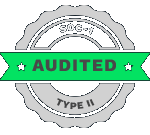Are you having trouble improving the retrieval accuracy? Cannot handle complex databases? – If you are one of those several CXOs who are facing these and many such related issues, then you will get all the information you need right here.
Retrieval Augmented Generation, or RAG for short, is an architectural pattern that boosts capabilities of Large Language Models (LLMs) by implementing external knowledge sources.
Every CXO is under pressure to deliver faster insights, reduce support costs, and deploy AI responsibly. Without a strategy like RAG, your enterprise risks falling behind competitors who are already scaling connected intelligence.
Rather than depending completely on the information encoded during their training, RAG solutions for enterprises can retrieve relevant information from a separate knowledge base and incorporate it into their responses.
Table of Contents
This approach significantly enhances the accuracy, relevance, and factual grounding of LLM outputs, while also mitigating issues like hallucination and outdated information. Just like every other piece of technology, RAG models have their own set of challenges that need to be attended to reach their full potential. It has been observed that US-based enterprises using RAG have reduced support costs by 35%.
AI SaaS RAG workflows: Embedding Product Documentation & Support Data
Embedding product documentation and support data into your software applications or platforms can significantly enhance user experience, boost product adoption, and streamline support operations from the SaaS AI integration providers.
What is embedding product documentation & support data?
It involves integrating data visualization and reporting directly into existing software applications or platforms.
Instead of switching to a separate knowledge base or support portal, users can access relevant information and insights within their workflow. This can include anything from user guides and technical specifications to FAQs, troubleshooting information, and even interactive data experiences.
Recommended Reading:
Benefits of embedding documentation & support data
Improved Customer Experience: Providing self-service access to relevant documentation and insights empowers users to find answers quickly and independently, reducing the need for contact support.
Increased Product Adoption & Stickiness: When users can easily understand and utilize your product’s features and benefits, they are more likely to engage with it and continue using it.
Reduced Support Costs: By enabling users to find answers themselves, the volume of support tickets can significantly decrease, freeing up your support team to focus on more complex issues.
Faster Time-to-Market: With easy-to-use documentation tools, you can streamline the creation and updating of documentation, enabling faster product launches and feature rollouts.
Enhanced Data-Driven Decision Making: Embedded analytics within documentation can offer insights into product usage, customer behavior, and common support queries, helping you make data-informed decisions.
Do You Know?
Methods for embedding documentation & support data
API and SDK integration: Use APIs and SDKs provided by documentation platforms or knowledge base software to integrate content seamlessly into your application.
Widgets and iFrames: Embed self-help widgets or iFrames within your existing application or website to display documentation and knowledge base content.
Custom embedding with vector embeddings: Transform your product manuals into intelligent, searchable assets powered by AI and store them in vector databases to enable semantic search and more personalized recommendations.
Tools and technologies for embedding documentation & support data
Knowledge base software: Platforms like Document360, ProProfs, and Helpjuice offer robust knowledge base creation, management, and embedding capabilities.
Digital Adoption Platforms (DAPs): Whatfix provides interactive in-app guidance and contextual documentation delivery for improved user onboarding and support.
Embedded analytics solutions: ThoughtSpot Embedded and Sisense can be integrated to display data visualizations and insights within your product’s documentation.
Developer-friendly tools: GitBook and Read the Docs are popular choices for developer documentation and open-source projects.
AI-powered embedding models: Platforms like Google Agentspace allow you to leverage custom embeddings for enhanced search and retrieval within your documentation.
By strategically implementing embedding techniques, leveraging available tools, & choosing the correct RAG AI consulting services, you can create a cohesive and enriching experience for your users, ultimately leading to higher customer satisfaction, improved product adoption, and a stronger competitive edge.

Setting up LangChain or LlamaIndex with SaaS Content in AI SaaS RAG workflows
Both LangChain and LlamaIndex are powerful frameworks for building LLM applications, particularly for tasks involving retrieval augmented generation (RAG).
They enable you to integrate Large Language Models (LLMs) with your own data, enhancing the model’s ability to provide contextually relevant and accurate responses.
LangChain excels in orchestrating complex workflows, chaining together multiple models, tools, and agents to handle intricate interactions and decision-making tasks, according to DataCamp.
LlamaIndex specializes in efficient data indexing and retrieval from large datasets, making it ideal for search, knowledge management, and enterprise data solutions where fast and accurate information access is paramount, says Zealous System.
The integration process involves several key steps regardless of the framework chosen:
Selecting cloud storage provider
Load data
Process and index data
Query and retrieve information
Effective implementation of RAG solutions for enterprises relies on several best practices as well as choosing the correct AI SaaS RAG workflows, including ensuring data quality and relevance, fine-tuning models for contextual understanding, balancing retrieval and generation, addressing ethical considerations, and regularly updating data. Seamless integration with existing IT infrastructure and workflows, along with thorough assessments to identify RAG’s potential value, are also crucial.
Choosing the right framework
The choice between LangChain and LlamaIndex depends on your project’s specific needs. LangChain is suitable for complex workflows and advanced orchestration with numerous data sources, while LlamaIndex is better for efficient data access from large datasets for applications like knowledge assistants or search engines. Combining both frameworks can sometimes yield optimal results.
Pro-tip: Choosing the right framework could shave weeks off deployment cycles.
Recommended Reading:
API integration for real-time responses
API integration for real-time responses refers to the process of seamlessly connecting applications or systems to enable the near-instantaneous exchange of information and execution of functions.

This is crucial for applications that require immediate updates and interactions, offering a significant improvement over traditional request-response model.
How it works
Unlike traditional request-response APIs, real-time APIs utilize various methods to achieve low-latency data transfer. Key mechanisms include the WebSockets ensure sub-second response times → meaning faster customer resolutions and higher NPS.
Real-time updates ensure your teams never miss critical insights powered by SSE protocols.
Benefits of real-time API integration
Integrating real-time APIs via AI SaaS RAG workflows services offers numerous advantages:
Enhanced User Experience
Better Decision-Making
Improved Efficiency
Greater Scalability
Increased Collaboration
Reduced Latency
Easier Integration
Use Case Example:
A SaaS provider offering business analytics and reporting tools often serves CXOs and data teams who need instant, reliable insights. These users frequently ask questions like, “What were last quarter’s top-performing regions?” or “Which marketing campaigns drove the highest ROI?”
By embedding a RAG-powered assistant directly into the SaaS platform, the system can pull relevant data from multiple sources, interpret the question’s intent, and return a concise, accurate answer in natural language.
For example, instead of manually searching through dozens of dashboards, a CXO can simply type: “Show me the revenue trend for the last six months by product line” and the RAG system will instantly fetch the right data, add context from product documentation if needed, and present an insight-rich response.
Performance, Latency, and Cost Considerations
Performance, latency, and cost are crucial factors in evaluating the efficiency and effectiveness of systems, particularly in computing and networking.
Latency, or delay, directly impacts performance, and both affect the overall cost of a system. Optimizing low latency often requires more resources, potentially increasing costs.
Performance refers to the speed and efficiency with which a system can complete tasks or process data. High performance is generally desirable, as it leads to faster processing times and better user experiences.
Cost considerations are essential when choosing between different system configurations. Low-latency systems often require more powerful hardware, optimized algorithms, and potentially specialized infrastructure, which can increase initial and operational costs.
Pro Tip: Balancing the need for low latency with cost constraints is a common challenge.
Conclusion
Retrieval-Augmented Generation (RAG) and vector databases are no longer optional for enterprises—they are the backbone of scalable AI-driven knowledge systems.
By embedding documentation, leveraging frameworks like LangChain or LlamaIndex, and enabling real-time API integrations, CXOs can ensure faster decision-making, reduced costs, and smarter customer experiences by incorporating the best RAG solutions for enterprises.
The future of AI SaaS RAG workflows lies not in isolated models, but in connected intelligence—where data meets context seamlessly.
Ready to cut support costs by 30%?
For CXOs looking to move from experimentation to enterprise-scale AI, BluEnt’s SaaS conslulting services bridge the gap—helping you design, deploy, and optimize RAG workflows that make smarter knowledge retrieval a core business strength.
FAQs
Why should CXOs consider RAG over traditional LLMs?Traditional LLMs rely only on training data, which can be outdated. RAG connects models to external knowledge bases, ensuring reliable, updated, and factual responses.
Which is better for enterprises—LangChain or LlamaIndex?LangChain is ideal for complex workflows and orchestration, while LlamaIndex excels in fast, large-scale retrieval. Many enterprises benefit from using both in tandem.
How do vector databases improve accuracy?Vector databases enable semantic search, which understands context beyond keywords, ensuring precise and relevant retrieval from massive datasets.
What industries benefit most from RAG?Any data-heavy industry—banking, healthcare, SaaS, e-commerce, legal, and manufacturing—can leverage RAG to improve decision-making, compliance, and customer support.
How does this impact on cost savings?By embedding documentation and enabling self-service, enterprises see fewer support tickets, lower operational costs, and faster adoption rates.












 AI SaaS Solutions for Operational Excellence and Business Efficiency
AI SaaS Solutions for Operational Excellence and Business Efficiency  OpenAI SaaS integration – A Quick Guide for CXOs
OpenAI SaaS integration – A Quick Guide for CXOs  SaaS Security 2025: How to Stay Ahead of AI-Powered Threats
SaaS Security 2025: How to Stay Ahead of AI-Powered Threats  Serverless SaaS in 2025: Build Scalable Multi-Tenant Apps with Less Code
Serverless SaaS in 2025: Build Scalable Multi-Tenant Apps with Less Code 
